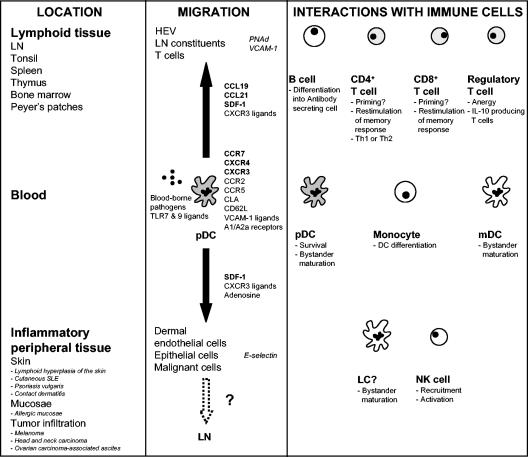FIG. 2.
The many fates of pDCs. pDCs play a central role in immunity, not restricted to their capacity to secrete IFN-α/β in response to viruses and induce an antiviral innate immune response. Upon encountering blood-borne pathogens, they can undergo maturation which can lead to the bystander maturation of surrounding pDCs and mDCs. Mature pDCs can migrate to LNs, where they activate antigen-specific B cells and CD4+ and CD8+ T cells. In response to inflamed tissue, pDCs can also traffic to the periphery. It is not clear whether pDCs reach the site of inflammation with an immature or mature phenotype. It has yet to be demonstrated whether interactions of immature pDCs with non-blood-borne pathogens in inflammatory tissue induce IFN-α production as well as maturation and migration to the draining LN to stimulate adaptive immune response.

